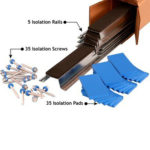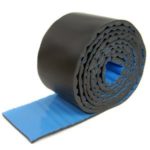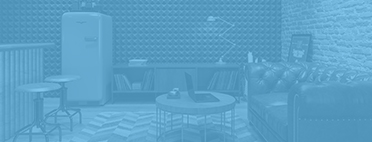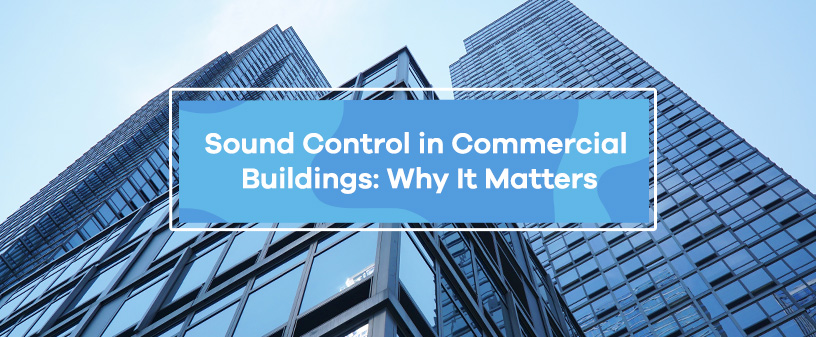
Sound control in buildings influences performance, productivity and privacy. In large commercial spaces like office buildings or schools, poor acoustics can lead to elevated stress levels and disrupted focus. For engineers and architects, understanding how to control sound in a building is essential to delivering quality design that serves both form and function.
Noise control creates environments where speech is clear, background noise is managed and privacy is protected. Whether it is keeping noise from traveling between conference rooms or reducing echoes in an auditorium, proper acoustics in buildings can improve safety, concentration and the overall user experience. Reliable, high-performance soundproofing products are key to achieving long-term success in your commercial project.
What to Consider When Planning Sound Control in Large Buildings
When designing or renovating large buildings, sound control strategies must be tailored to the space’s unique architecture and functional needs. Key factors that affect acoustical performance include:
- Age of the building: Older buildings often lack modern acoustic materials, meaning retrofitting may require creative sound reduction or vibration isolation strategies. Conversely, new construction allows for a more integrated approach from the start.
- Construction materials: Materials like concrete, glass or drywall each interact with sound differently. Dense materials might reflect or amplify sound, while lightweight assemblies might allow sound transmission between rooms or floors.
- Project budget: Sound control in buildings can scale to fit the project’s financial scope. Cost-effective solutions like acoustic panels and Quiet Batt® Soundproofing Insulation offer excellent performance without inflating budgets. For high-traffic or specialized areas, premium products like IsoTrax™ Soundproofing Systems or composite barriers may be more appropriate.
- Usage of the space: Open-plan offices, healthcare centers, hotels and industrial buildings all present different sound control requirements. Identifying areas needing speech privacy or echo reduction helps determine where to apply absorption, blocking or isolation materials.
- Compliance and fire rating: Product selection should also align with building codes and fire safety requirements. Look for materials that meet commercial-grade standards because safety is as important as performance.
Sound control is not one-size-fits-all. It requires thoughtful product selection and the right combination of strategies to support your building’s long-term acoustic goals.
Sound Control Strategies: From Absorption to Privacy Solutions
Effective sound control in buildings requires a layered approach. Let us explore the four main strategies architects and engineers should prioritize in commercial projects:
Sound Absorption
Sound absorption materials reduce reverberation and echo by capturing sound waves instead of allowing them to bounce around a space. This is crucial in open areas, atriums and conference rooms where clarity and comfort are key.
Recommended products:
- Acoustic panels: Stylish and effective, perfect for offices or hospitality spaces. They can be wall-mounted or ceiling-mounted.
- Acoustic baffles: Suspended from ceilings to manage echo in large rooms.
- Acoustic foam: Acoustic foam panels are often used in control rooms or performance areas for targeted absorption.
Factors to consider when selecting sound-absorbing materials:
- Noise reduction coefficient (NRC) rating: Higher ratings equal more sound absorption.
- Aesthetics: Panels and baffles are available in a variety of colors and finishes to suit any design.
- Fire rating: Make sure to check that products comply with fire safety requirements for commercial buildings.
Sound Blocking
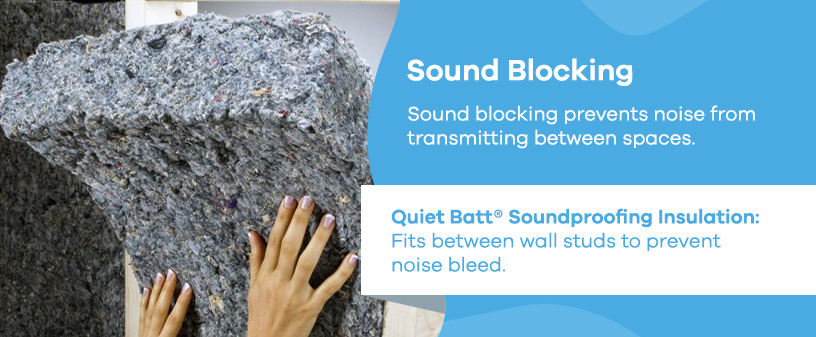
While absorption controls sound within a space, sound blocking prevents noise from transmitting between spaces, which is critical for walls, floors and ceilings in multi-tenant buildings or privacy-sensitive areas.
Recommended products:
- Quiet Batt® Soundproofing Insulation: Fits between wall studs to prevent noise bleed.
- Mass-loaded vinyl (MLV): A heavy, flexible barrier that can be layered into walls or floors.
- Door sweeps and seals: Sealing air gaps around doors to block airborne noise.
What to consider:
- Sound transmission class (STC) rating: Use higher STC-rated materials where speech or mechanical noise needs to be blocked.
- Integration: Materials must be compatible with your wall, ceiling or floor construction method.
- Durability: MLV and door sweeps are long-lasting, making them ideal for high-use spaces.
Vibration Isolation
Vibration isolation addresses impact noise, such as footsteps, dropped items or machinery vibrations. If not isolated properly, these sounds can travel through building structures.
Recommended products:
- IsoTrax™ Soundproofing System: An all-in-one solution designed to decouple drywall from framing to reduce vibration transfer.
- Vibration isolation mounts: Ideal for mechanical rooms or ceiling-mounted equipment.
- Resilient channels: Used in walls and ceilings to create a buffer that absorbs vibration.
Vibration isolation is essential in gyms, factories or any building with active foot traffic. Choose products rated for the structure’s demands.
Speech Privacy Solutions
Speech privacy is vital in offices, healthcare facilities and anywhere confidential conversations occur. Without proper speech privacy solutions, information can be overheard and productivity can suffer.
Recommended products:
- Sound masking systems: Emit ambient noise to obscure speech.
- Privacy screens and acoustic partitions: Physically and acoustically divide open areas.
- White noise generators: Provide consistent background noise to mask disruptive sound.
Key factors to keep in mind:
- Coverage area: Systems should be calibrated based on square footage and occupancy.
- Adjustability: Look for solutions that allow volume control to suit different environments.
- Aesthetics and mobility: Portable options like acoustic partitions are ideal for dynamic office layouts.
By combining these four strategies — absorption, blocking, vibration isolation and speech privacy — you can achieve balanced, high-performance sound control in buildings of any scale.
How to Control Sound in Different Areas of a Large Commercial Building
To deliver effective noise control in commercial buildings, it is crucial to tailor your approach to each structural element.
Walls
Walls are often the primary barrier between spaces, so it is important to soundproof them. Use Quiet Batt® Insulation, MLV or the IsoTrax™ System to add mass and decouple framing from drywall. Acoustic panels can also be surface-mounted to reduce reflection within a space.
Floors
Floors transmit airborne and impact noise. Combine MLV underlayment, acoustic flooring underlayment and vibration isolators for multilevel buildings. Carpet tiles with underpadding also add absorption in office spaces.
Ceilings
If you want to soundproof a new ceiling, you will need to attach hat channels, insert soundproofing material like Quiet® Batt Soundproofing Insulation between the drywall and joists and install extra drywall to finish it off. This process involves adding mass to absorb vibrations.
Doors
Doors are a common weak point. Seal air leaks with door sweeps and acoustic door seals. If you have subfloor access, lay down underlayment like PROFLEX™ 90, which is a rubberized option. Alternatively, you can opt for the Impact Barrier QT Flooring Underlayment, an eco-friendly choice that resists mold while reducing noise.
Pipes
Mechanical systems can carry noise across rooms. Wrap pipes in a dense vinyl material to block noise and dampen vibrations. If the pipes are encased in drywall, use Quiet Batt® Soundproofing Insulation — a sound absorption product that also insulates.
Explore Your Sound Control Options
Sound control in buildings is an essential part of smart commercial design. From product selection to strategic implementation, the team at Soundproof Cow is here to support your vision with high-quality, code-compliant solutions.
We proudly offer:
- Free acoustic analysis
- Exclusive “forever sale” for veterans and active military with 10% off
- No Bull sale pricing
We provide custom shipping options and fast response times. Contact us today to speak with a technical sales representative and get the sound control answers your project demands.




